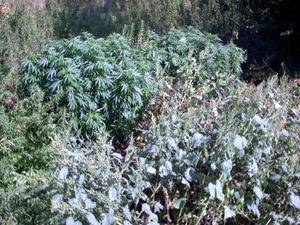oh well.....i can't delete my post, which contained inaccuracies concerning the word "terpene".....i can't hide from it so i guess i'll just have to make the best of it.....
the whole point was trying to see if anyone had encountered a plant that just smelled unique and was never propagated or released to the community....sort of like a walk down memory lane.....maybe the odor was just too funky and was discontinued for that reason.....too many odoriferous plants are not being selected for that very reason- they are just too stinky!
anyway, here's a pic of my gp....

the whole point was trying to see if anyone had encountered a plant that just smelled unique and was never propagated or released to the community....sort of like a walk down memory lane.....maybe the odor was just too funky and was discontinued for that reason.....too many odoriferous plants are not being selected for that very reason- they are just too stinky!
anyway, here's a pic of my gp....

Last edited:







 & those OD pic's look great. Peace all 3ld
& those OD pic's look great. Peace all 3ld 
 I remember that post by P4P about how he knew this and that because of the terpenes, and I think he actually said from bubble hash LMFAO , till BUB caught him bigtime and no big words were going to get him out of that one LOL , great job bro....ndn
I remember that post by P4P about how he knew this and that because of the terpenes, and I think he actually said from bubble hash LMFAO , till BUB caught him bigtime and no big words were going to get him out of that one LOL , great job bro....ndn 
